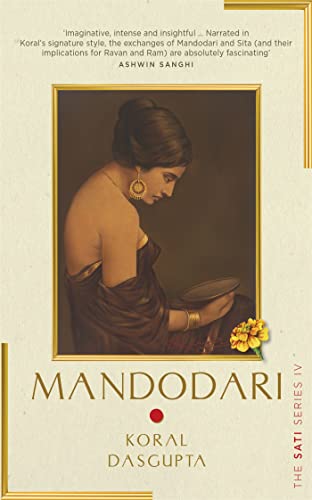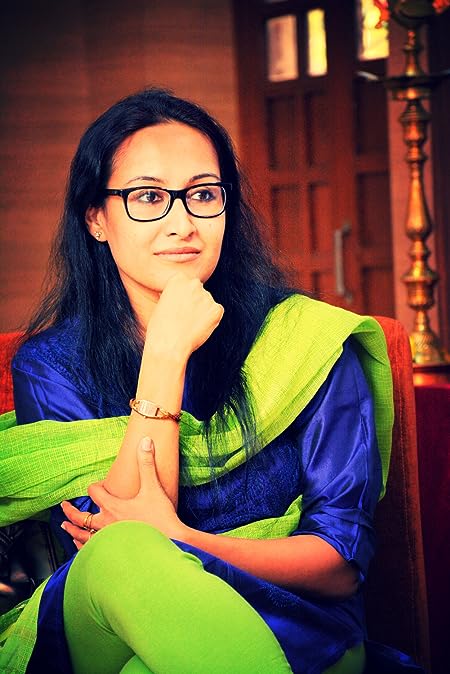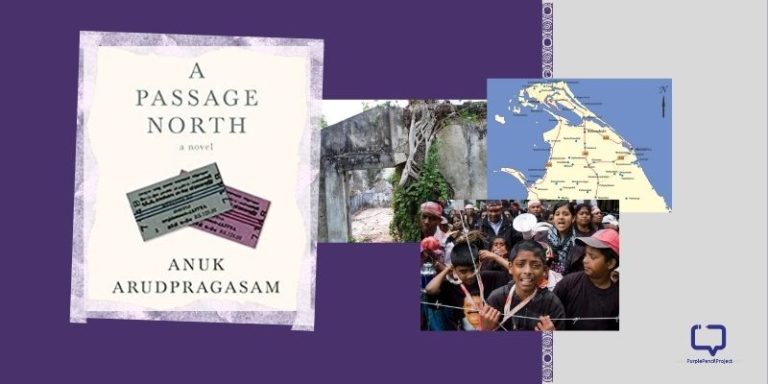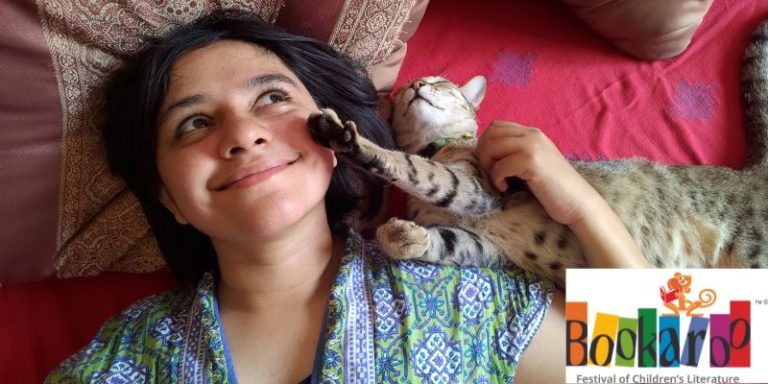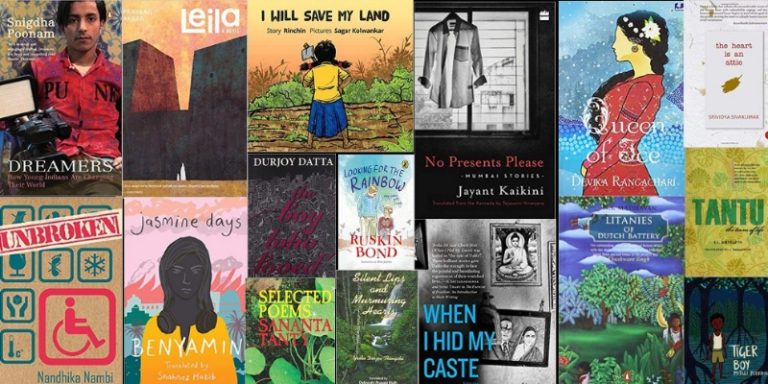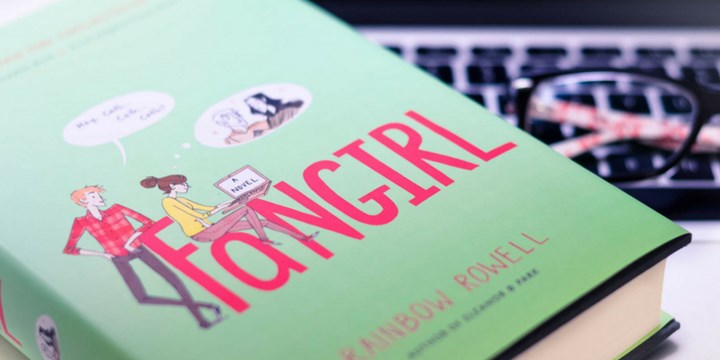Sneha Pathak reviews Mandodari by Koral Dasgupta (Pan Macmillan India, 2023) and concludes if mythological rewritings are your thing, Mandodari should be on your list.
What got me interested in reading Koral Dasgupta’s Mandodari was the titular character. I had heard of her, of course. In passing. In a sentence that would summarise her entire existence in a neat package – Mandodari was Ravan’s wife. Nothing more, nothing less.
What was she as a person? Why did she marry Ravan? Was she a supporter of his scheme to bring Sita to Lanka? Did she ever take a stand against him, or was she docile and accepting? Having read Dasgupta’s novel, I think I know her a bit more than just someone’s wife. Or mother.
Dasgupta writes in her introduction to the book that the Sati series provides its readers an “inclusive overview of the protagonist’s own life” as well as “the suppressed pain of those around them.” Mandodari does something similar.
This is, by no means, a simple biography of the queen of Lanka. Instead, through a carefully chosen first-person narrative, Dasgupta gives Mandodari a voice through which we learn more about her innermost feelings and desires, as well as get a chance to see those around her with a fresh perspective.
We meet Mandodari, the daughter of Mayasur; Mandodari, the closest ally and partner of Lankesh; Mandodari, the intelligent and creative artist and architect; and Mandodari, the mother within the pages of the novel.
We encourage you to buy books from a local bookstore. If that is not possible, please use the links on the page and support us. Thank you.
Mandodari- The Real Woman
Mandodari comes across as a strong and intelligent woman who is talented and practical, at the same time as being more of a visionary than any other character who features in her tale. She isn’t a mute doll or anybody’s prisoner who is satisfied with living a life of luxury like Lankeshwari.
She is a creator, a worker, and a scientist who is not afraid of getting her hands dirty, chapped, burnt, or blistered as she stands alongside Ravan and creates the marvel that Lanka turns out to be.
She is presented to the readers as someone with a scientific bent of mind who creates models of irrigation systems and a community kitchen for her father despite not being allowed to oversee their construction, or being given any credit for those.
Even though she is somewhat creatively starved in her father’s kingdom, she is intelligent enough to realize that Ravan’s offer of making her an equal partner in his kingdom and his talks about credit and oppression is mostly a ploy at making her more malleable to going along with him.
Love reading mythology? Do check our list of 15 Brilliant Indian Mythology Writers You should read
When she agrees to accompany Ravan, she does so to prevent her father’s kingdom from coming to harm, but all she receives in thanks are curses and a bad name. Mandodari is keen and sharp-minded enough to realize when Lankesh is going wrong and when he needs counsel, but having accepted life with Ravan as her future, she enters into an almost equal partnership with him and throws herself with vigour into changing Lanka according to their vision.
She makes Lanka a place that becomes a port of call for all leading figures from various neighbouring kingdoms, be it traders who want to establish trade relations with Lanka or be it scientists who all leave their homelands to live in Lanka and bring their vision to fruition. She is a character who gains the love and respect of most of her family, as well as the people of Lanka.
However, she is never accepted by Meenakshi – or Soorpnakha, as we popularly know her – and the darling, spoiled sister of Ravan ends up becoming the cause of Ravan’s vengeance and his ultimate destruction.
Most of the action of the book takes place when Sita is already in Ravan’s captivity though we move backward to get an idea of Mandodari’s life before Sita arrived. Dasgupta constantly draws parallels and contrasts between Sita and Mandodari. Like Mandodari, Sita is also an outsider to Lanka.
But while Mandodari comes across as someone more practical, Sita is more of an idealist. While Sita can lose herself in ruptures thinking of her husband’s love even when she is separated from him, Mandodari feels that despite her and Ravan living on the same premise, they have never been further apart.
Then there is the contrast between Ram Rajya and Ravan Raj. While the former is the vision of a state whose subjects “would live without fear or hesitation, with dignity and education…”, in Ravan Raj, it is believed that if “discipline fails, there is a penalty.” Ironically, Ravan seems to forget his own adage when he kidnaps Sita, and everyone around him has to pay the penalty – Mandodari included.
Dasgupta also gives her readers glimpses of life in Lanka, of the awe of the Lankans towards their ruler, as well as the philosophy that drives Ravan. I wish there was more of Mandodari herself, of her life without being Lankeshwari, that was part of the story though.
However, as Dasgupta writes in the introduction, the entire narrative had to be re-created in the case of Ahalya and Mandodari. Using the limited information available and the events that surround the life and times of Mandodari, she is successful in creating a character that feels very human, very real, and very memorable. If mythological rewritings are your thing, Mandodari should be on your list.
Best Quote from Mandodari
Sita always converged to this – her Ram Rajya. The concept seemed so spotless and impressive that it sounded practically arduous! Like Ravan Raj, Ram Rajya also spoke of dissolving the disparity between the Mortals and the Immortals.
Acceptance was their way, rejection was ours. Ram Rajya believed in the superiority of celestials. Ravan Raj considered such devotion as a complete lack of self-esteem.
Have you read this powerful story about Mandodari? What do you think of it? Drop a comment below and let us know!








